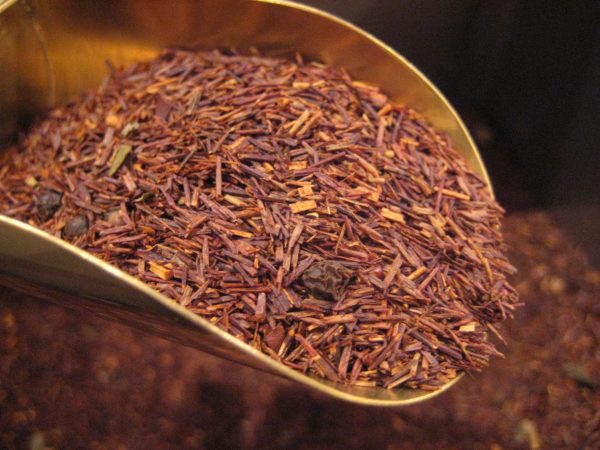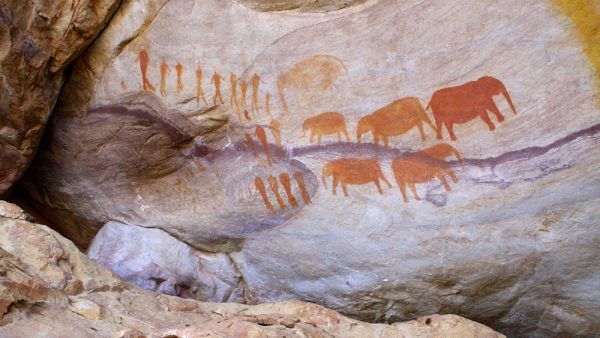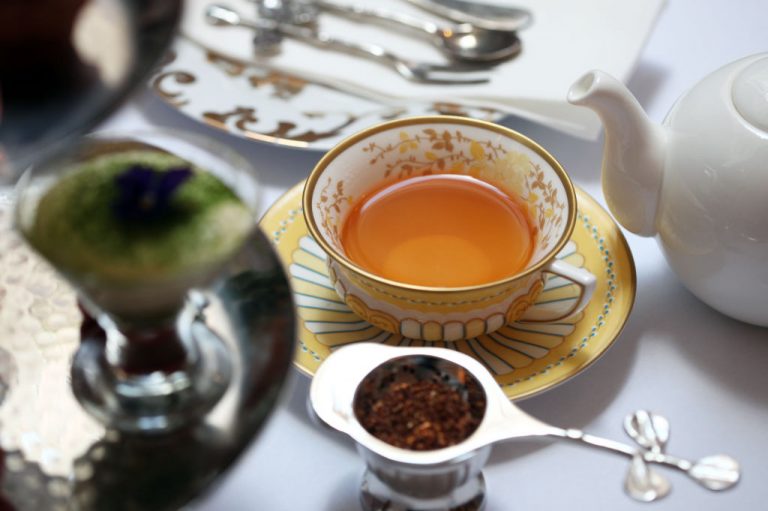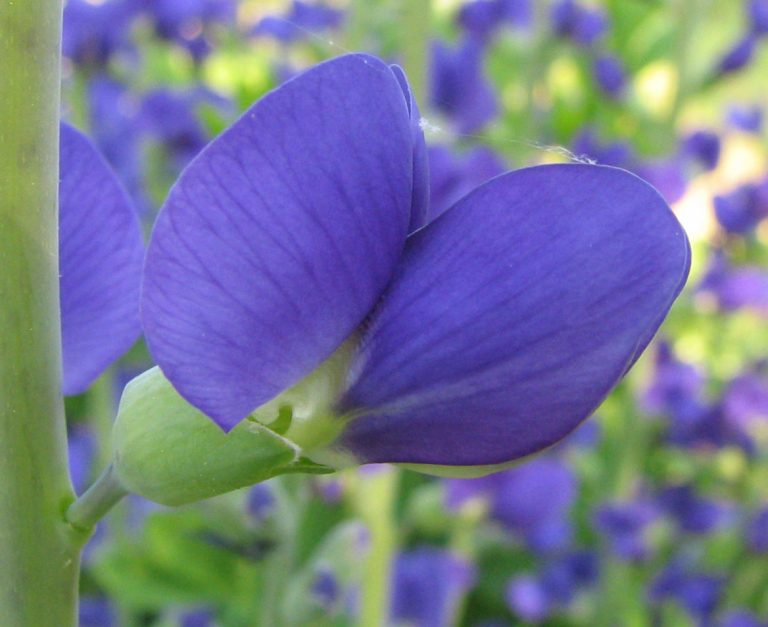A proud inheritance of South Africa, Rooibos tea has become the very first food in Africa to be approved by the EU for listing on the register. The EU’s logo may now be used on Rooibos products, recommending the quality and authenticity of the product to European consumers.
Like Gorgonzola, Kalamata olives, and true Champagne, Rooibos (Red Bush) is now officially considered a regional product, along with the names of various wines, meats, cheeses, slices of bread, and other products. These products can only be labeled as such if they come from their designated region.
If you have ever visited South Africa, particularly the Western Cape area, you won’t forget the aroma of Rooibos tea. It is as natural and ineffable as the people of the Cape, like the smell of the sea and fynbos (heather, indigenous flora) in the early morning.
Rooibos tea is made from red bush Aspalathus linearis. Its color is red and the scent is fresh and sweet. It has a light, earthy, bushy flavor, combines easily with other natural ingredients like honey, and is a must with traditional South African Melktert (MilkTart.)

Bush tea beginnings
The Rooibos plant grows freely in the mountainous region of Cederberg. Rooibos only grows within the one hundred-kilometer radius around the town of Clanwilliam in the Western Cape. Endemic to the region which is considered to be among one of the most bio-diverse regions in the land, it is found nowhere else in the world. The Cederberg’s extraordinary botanical diversity includes the magnificent Cape Floral Kingdom of South Africa.
Success
You are now signed up for our newsletter
Success
Check your email to complete sign up
The Rooibos plant has small needle-like leaves and is harvested by hand using sickles in the Summer. The stalks are tied in neat bunches called “gerwe” in the Afrikaans language.
The plant puts forth small yellow flowers from which, after pollination, seedpod forms, concealing a single seed. Years ago a San (indigenous people of the Cape) woman discovered that certain kinds of ants store the Rooibos seeds in their nests. The farmers then began collecting the seeds from the ant nests to plant them.
These days farmers have a technique to sift the soil for seed, so they do not rely on ants. But the ant’s actions certainly contributed to the initial propagation and success of Rooibos. Thanks to those industrious ants, Rooibos is now available worldwide!
As a Global Heritage protected wildlife area, the Cederberg region includes 500-million-year-old sandstone structures and a 6,000-year-old rock art legacy left by the indigionous people of the Cape (San, Bushmen, or Khoi-Khoi). Their traditional knowledge about the uses of Rooibos, which was cultivated by locals and farmers for centuries, was thus preserved.

The Rooibos or ”veld tea” has humble beginnings. The Dutch inhabitants of South Africa promoted rooibos in the 1700s as an alternative to the imported black teas of the time. Rooibos as a commercial commodity did not progress until the 1930s, after which it was cultivated in earnest.
Health benefits of Rooibos
Caffeine-free and pleasant tasting, South African mothers serve Rooibos to their children and use it extensively for soothing colicky babies. One can consume up to six cups a day, as the tea is low in tannins and fat-free.
The aromatic leaves contain magnesium, zinc, iron, and other minerals like potassium, copper, and calcium, which enhance its healing efficacy. Rooibos is rich in vitamin C and is said to have 50 times more antioxidants than green tea. A high concentration of polyphenolic compounds (micronutrients) makes it a sought after health and beauty enhancer, according to sarooibos
As a beauty product, rooibos tea extract is praised for its unique antioxidant properties that defy free radicals — a major cause of aging of the skin. According to a study published by NCBI, 20 women were observed for four weeks to investigate the efficacy of different herbal flavonoids.
Rooibos came out on top with a wrinkle reduction of 9.9 percent. Experts concluded that this result was likely due to the anti-aging effects of its antioxidants. Rooibos also contains the enzyme superoxide dismutase, which protects the skin against visible signs of aging and boosts the production of healthy skin cells. The hypoallergenic extract can be used safely by those with sensitive skin.
Liquid Gold
Dawie de Villiers, legal director of the SA Rooibos Council, believes the recent distinction will lead to worldwide recognition for the local tea.”The inclusion of the name Rooibos on the EU register is just the start of getting global recognition, he said.
“Our next step as the council is to get the term Rooibos also certified as a product of origin with the WTO,” De Villiers told news24. “Rooibos is competing with other herbal teas grown all over the world like hibiscus, chamomile and peppermint.” He believes the increased recognition will also help to preserve traditional knowledge of South Africa’s heritage and give the small-scale cultivators and local farmers of Rooibos in the indigenous communities a financial boost.
According to an article in Io.co.za, in 2019 the Rooibos industry and the Khoi-Khoi and San signed an access and benefit-sharing (ABS) agreement. It allows Khoi-Khoi and San communities financial benefits from profits obtained from Rooibos.
Daily maverick says the Rooibos industry now employs thousands of workers and up to 12,000 metric tons of rooibos are produced annually. The South African nation consumes 4,500 to 5,000 tons of the herb and exports the rest to over 30 countries worldwide.
The online newspaper’s Kevin Bloom reported in 2019 on how the tea delivered on the “Khoisan’s rightful claim to their heritage and to their land.”







